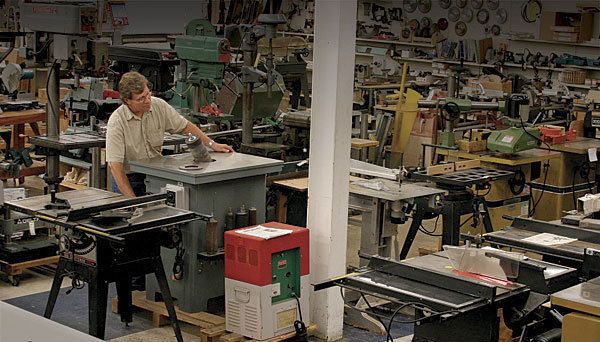Used Machines Can Be a Steal
Learn how to avoid lemons, and you’ll get serious power and capacity for less money
Synopsis: Step up to a bigger, more powerful woodworking machine without spending all your cash. Roland Johnson shows you how to find great deals on used woodworking equipment and then rehab your find so it works almost like new. Searching for old tools is a rewarding task, but first you have to educate yourself. Your new bandsaw, tablesaw, jointer or planer is out there somewhere. Learn how to find it.
From Fine Woodworking #218
Buying used woodworking equipment is a great way to step up to machines with bigger capacity, higher horsepower, and smooth, solid performance that comes with lots of heavy cast iron.
Great deals can be had on old woodworking equipment, especially bandsaws, tablesaws, and jointers, but used machinery often requires some refurbishing. Fortunately, basic power-tool technology hasn’t changed much in the last century, so it doesn’t take an engineering degree to bring an old horse back into harness.
I’ll show you what to look for in a used machine and what to look out for. I’ll also show you what type of work you may need to do to rehab an old machine, but you’ll see the benefits, too. A bigger, better machine should help you do better work.
Finding your gem in the rough Searching for old tools can be rewarding, but first you must educate yourself on the type of machine that fits your space and needs, and have a price limit in mind.
You can use the Internet to read about old tools, such as information on the manufacturer, performance, utility, and mechanical eccentricities. One great online source is the Old Woodworking Machinery site (OWWM.org).
And there are lots of good sources for good-quality old tools. The key is knowing where to look.
Buy local if you can—Locally purchased tools offer a couple of real advantages: It’s easy to inspect the tool, and getting it home will be less of a hassle and expense. Newspaper ads are usually great sources, but you also can find tools locally using Craigslist.com. And you may find a gem at a tag sale or flea market.
Long distance can work, too—Approach a long-distance purchase with care. To assure a fair deal, pay strict attention to photos and ask the seller hard questions. Long-distance purchases also will have to be shipped unless you plan to pick up the machine. Make sure the seller is willing to get the machine ready to ship and help the shipper load the machine, and get a firm bid on shipping costs. Freight charges can kill a good deal quickly.
If you’re looking nationally, eBay is the best known source of used machinery. However, FineWoodworking.com, Woodweb, and other sites have classified sections that could help.
For the full article, download the PDF below:



















Log in or create an account to post a comment.
Sign up Log in